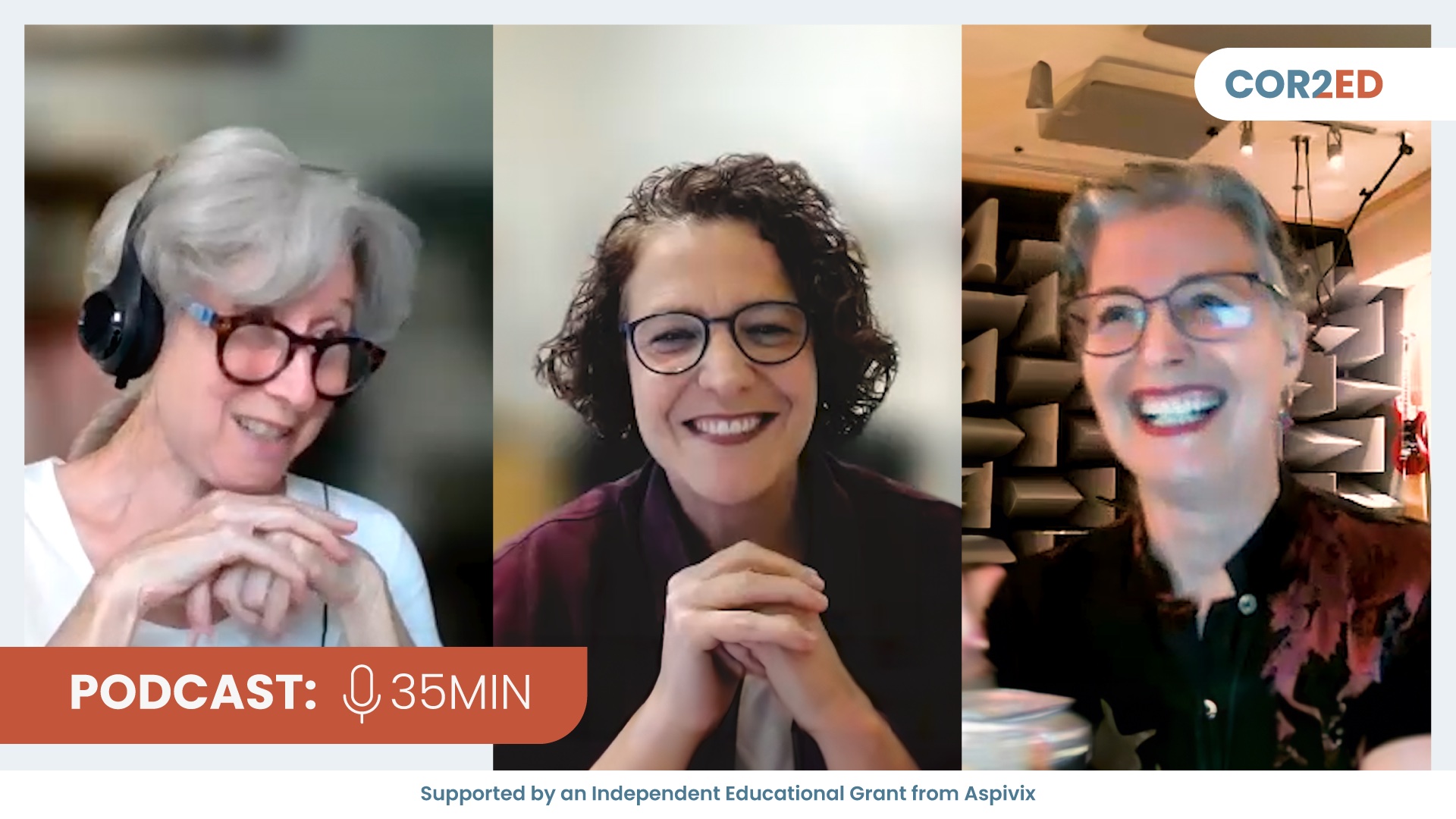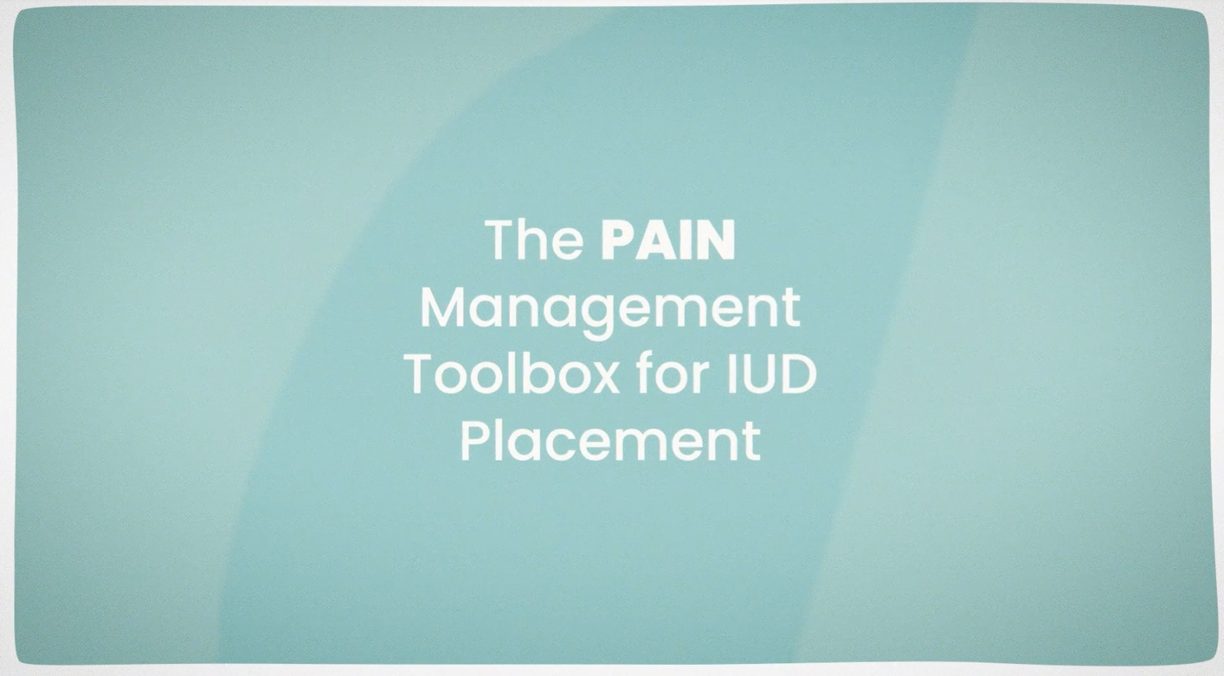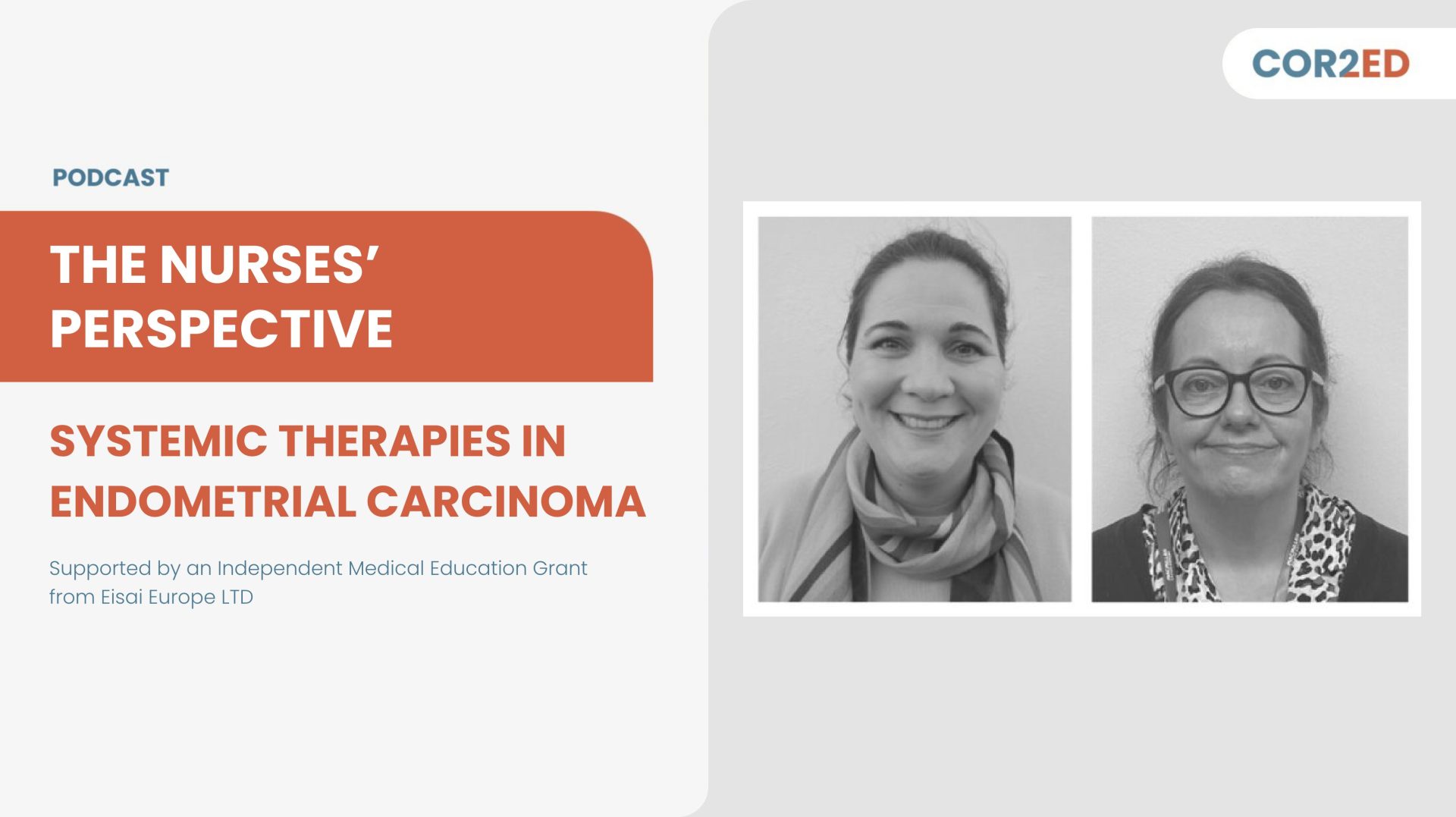Brought to you by
Prof. Nándor Ács
Head of Obstetrics and Gynecology Department at Semmelweis University, Budapest, Hungary
Dr Anne-Sophie Ducloy-Bouthors
Head of Obstetrics Anesthesia Medical Unit, Jeanne de Flandre Academic Women’s Hospital, Lille, France
Please note:
OBSTETRICS & GYNECOLOGY CONNECT podcasts are designed to be heard. If you are able, we encourage you to listen to the audio, which includes emotion and emphasis that cannot be grasped from the words on the page. Transcripts are edited for readability. Please check the corresponding audio before quoting in print.
Tonke de Jong
Innovation is the cornerstone of future success. Novel therapeutic options are being investigated to improve the management of postpartum hemorrhage. What are the current advances in the field and how can they impact the future treatment strategies for women suffering from PPH? Keep listening to find out. In the final episode of this four-part podcast series on severe PPH, we discuss the latest treatment advances in the management of PPH and how experts perceive the management of PPH will evolve in the future. This podcast is an initiative of COR2ED and supported by an independent educational grant from Novo Nordisk.
I’m honoured to introduce to you today’s two experts in the field of PPH; Prof. Nándor Ács, who is head of the Obstetrics and Gynecology Department, Faculty of Medicine, Semmelweis University, Hungary and Dr Anne-Sophie Ducloy-Bouthors, who is Head of Obstetrics Anesthesia Medical Unit at the Jeanne de Flandre Academic Women’s Hospital, France. We are very excited to listen to your discussion.
Prof. Nándor Ács
So, ladies and gentlemen, dear audience, dear colleagues. It's a pleasure for me to be here with you talking about a really interesting and important topic today, this topic is postpartum bleeding. So first of all, I would like to say some words about myself. My name is Nándor Ács. I work at the Department of Obstetrics and Gynecology at Semmelweis University in Budapest. This is a tertiary care department. This is the highest level institute in Hungary, so a lot of difficult cases are referred to us, and therefore we've got some, really some experience with these cases. So why is our topic really interesting and important for us even nowadays? Postpartum bleeding is a significant contributor to maternal morbidity and mortality, and it remains a leading cause of maternal mortality globally. It affects around 6% of women giving birth and severe PPH, that is, postpartum hemorrhage is present at around 1 to 3% of all births, and it is responsible for around 8 or 10% of maternal deaths even in the developed regions. So without treatment, postpartum hemorrhage can rapidly worsen and lead to shock, organ failure and death. And therefore we are still in need of finding some novel therapeutic approaches to solve this life-threatening situation. What also emphasizes the importance of this topic is that the WHO has issued a roadmap to combat postpartum hemorrhage between 2023 and 2030. So this was just a short introduction; to why we find this topic interesting and important, and it is an honour and a pleasure for me to welcome our distinguished colleague, Dr Anne-Sophie Bouthors from France, Anne-Sophie, it's a pleasure to be here with you.
Dr Anne-Sophie Ducloy-Bouthors
Hello Nándor, hello everyone. Thank you so much for giving me the opportunity to contribute to this education programme about postpartum hemorrhage. I’m an obstetric anesthesiologist for 40 years now in the biggest Women’s hospital in France in the north of France, Jeanne de Flandre Academic Women’s Hospital. And my research topic is postpartum hemorrhage, patient blood management in obstetrics and coagulopathy, hemostasis and pregnancy. This is my pleasure to have our meeting today.
Prof. Nándor Ács
So thank you for your introduction to set the scene together, we have to discuss some questions, and the first question is whether we are satisfied with the therapeutic options that we have today, to treat severe PPH and decrease maternal mortality. I have to tell you that overall, the current treatments for PPH are effective. We have to declare that these are effective given the continuing decrease in deaths from hemorrhage in the developed world. However, this is very, very important that we should try to avoid each and every death that is true to PPH all over the world. Moreover, despite these effective measures we have, postpartum bleeding remains, as we mentioned before, a leading cause of maternal mortality and severe morbidity globally. And also, beyond these facts there is a new challenge in the developed world. We have a 4-to-5-fold increase in the incidence of severe postpartum bleeding in Europe. This fact has several reasons behind it, mostly the obesity of the patients, the advanced age of the mothers, and some factors like this, but the challenges there are very high and significant increase in the incidence of these bleedings in Europe. So what is your opinion, what is your view on this, Dr Bouthors?
Dr Anne-Sophie Ducloy-Bouthors
So you highlighted that the incidence in developed countries is increasing, but the majority of the deaths are occurring in developing countries. However, we made very important progress in France, for example, we reduced by a factor 3 the incidence of maternal death due to hemorrhage, thanks to the mobilization of health caregivers, and very strict protocols for the management of PPH. And we observe in Vietnam, for example, or in Egypt, the same effort of health caregivers to better detect and manage postpartum hemorrhage. So we can do it, and this is important that every healthcare giver in every part of the world could be mobilized around this theme of postpartum hemorrhage. Not only healthcare givers, but also institutions, and every person that can prevent or avoid this very important pathology. So the new development could be the availability of the medicine and the devices that help to manage postpartum hemorrhage and especially availability of blood products. Because when someone is bleeding, blood is necessary for anesthesiologists to resuscitate this woman.
Prof. Nándor Ács
Thank you Anne-Sophie. If I’d like to react to your thoughts, I have to tell you that there is a need - we have to distinguish between the developed world and the less developed regions, of course, in the later ones, in the less developed countries, the access to medicines, the access to blood, intravenous administration of drugs may be very, very limited, so it's a completely different situation. In Europe or North America, on the other hand, the most important issue is the early recognition and the early active treatment. We have to act very fast. However, and also even in these countries, the resources may be limited in smaller obstetric settings, and most of the deliveries in each and every country happen in these smaller settings. So, not just the tertiary care department, the highest-level departments, and also there, we have to find the solutions for stopping this bleeding and save the lives of these mothers. And also, what is very, very important, in my opinion, is the continuous training of the personnel. We have to train them, we have to train ourselves regularly, continuously. So Anne-Sophie, do you agree? Or what do you believe? What are the current gaps in these processes?
Dr Anne-Sophie Ducloy-Bouthors
I agree with you. We have an organization in the north of France, which, in all France, is a perinatal network. So, we go to every little obstetric unit and we do multi-disciplinary training for the team. So, midwives, nurses, anesthesiologist, anesthetists, obstetricians, and also the people around the woman, and we make training about that. We also have guidelines to prevent and treat anemia before delivery. So prepartum anemia, is a very important objective to prevent postpartum hemorrhage, because anemia is a factor of postpartum hemorrhage, and also a factor of severe morbidity in postpartum hemorrhage. And we also develop devices to diagnose anemia and diagnose coagulopathy at the point of care at the bedside of the patient, and it helps to be very proactive, as you suggest. And so it’s one of the themes of my research to develop these tests. So we first develop and our hemoglobin tests at the bedside of the patient. Now we have developed a fibrinogen test which is very easy to use, and also viscoelastic tests to diagnose the coagulopathy and this demonstrates that the earlier the treatment is given the better the result is.
Prof. Nándor Ács
Yes, it's always said that, in this case, time is blood. So, I was told by a very good anesthesiologist colleague. So, our task for today is to talk about the new developments, and the new options in treating severe PPH, so if we would like to highlight the areas of potential new research, and the potential new developments, I think we must think about new medicines, new treatment strategies, and some technological advancements or new devices. Anne-Sophie, what do you think about the new therapeutic developments to treat severe PPH?
Dr Anne-Sophie Ducloy-Bouthors
I will be happy if you speak about intranasal oxytocin, can you speak about that, because it seems so interesting.
Prof. Nándor Ács
There are some very promising options, and we have some publications on the potential use of heat stable, and nasally administered oxytocin. And this is very, very promising, because it can be used in remote places in less developed countries also. So, this heat stable oxytocin that can be administered nasally is a very good option. Also, we have some publications on the potential use of melatonin as a synergizing agent with oxytocin. Because melatonin levels peak in pregnant women just before birth, and these levels are supposed to signal increased myometrial contractility. We also have studies on the effects of vasopressin against the bleeding, and there is an antiarrhythmic drug, that is also a target molecule, and the name is dofetilide. I have no experience with that, I have to tell you. But I’ve just read the publications. It works by selectively blocking the rapid component of the delayed potassium current, and this causes the refractory period of the tissue to increase, this may help the contractility of the uterus, of course. And at the end, not a new medicine, we have got this, but a new approach; so the earlier and more frequent use of activated factor VII has also been proposed. So, these are the medicines. These are the new drugs that are under development that I'm aware of.
Dr Anne-Sophie Ducloy-Bouthors
On the side of patient blood management, we also have tranexamic acid which can be used intramuscularly and we are several research teams to work on this old drug. But it's an old drug, easy to use, easy to keep. And the use of tranexamic acid, prophylactic tranexamic acid is not very efficient but when bleeding is beginning, it can be given very quickly, and so before the third hour, and it has to be renewed 30 minutes after the beginning of bleeding to keep the minimum concentration, and maintain efficiency before very, very important hyperfibrinolysis, as we observe in acute obstetric coagulopathy. And the second part of the treatment that we are progressing on now, is the restoration of fibrinogen plasma level, which is the decrease of fibrinogen is the central component of coagulopathy, so we need to restore it and to restore it we can use fibrinogen concentrate or cryoprecipitate also very quickly after the beginning of coagulopathy and postpartum hemorrhage. And we also can use plasma. However the targeted restoration of fibrinogen is more efficient than the blind strategy to correct this coagulopathy. And what could be very useful also is now the new drug lyophilized plasma. It's very new, and it could be the way to make it available in every women’s hospital, everywhere. So, it's like plasma, but doesn't need to be frozen, so deep frozen. And so, it's easy to use, easy to be available for clinicians. So, my last comment is about factor VIIa. Factor VIIa is a very potent pro-coagulant drug that has been created and concepted to stop intractable bleeding in patients with hemophilia and antibodies. So it's a very powerful tool to provide coagulation. However, you need to have platelets to make factor VIIa efficient. And because it generates thrombin, you also need to have fibrinogen. So to have factor VIIa efficient, you need platelets, fibrinogen, and also calcium, a good and normal temperature, and a good and normal acid basic equilibrium. So it's the conditions to have a good efficiency of factor VIIa.
Prof. Nándor Ács
Thank you for this very, very comprehensive explanation of the drugs that we can use during severe postpartum bleeding, and that also showed how important for us gyne obstetricians, gynecologists, anesthesiologist colleagues and hematologist colleagues, because we are simple handymen, we are just the obstetricians. And these distinguished colleagues are always there with us and help us in treating these severe conditions. We also have to tell some words about the new treatment strategy strategies if we have them. They may also be very important. However, at present, at the moment I think there are no new ideas at our side, at the obstetrical side. The new strategies come from anesthesiology or hematology. For example, I've read some publications, some very interesting publications about restrictive fluid resuscitation or point of care, and viscoelastic hemostatic assay-guided blood product transfusion, but these are specialities of a hematologist or a specialist anesthesiologist. So Anne-Sophie, what do you think about these technological advancements or new treatment strategies?
Dr Anne-Sophie Ducloy-Bouthors
Thank you for this question. So it's at the heart of my work, and most of these strategies are coming from trauma and massive bleeding in trauma or major surgery, and we need to understand the specificities of obstetrics, especially on coagulopathy. However, guided strategies help us to avoid respiratory complications for women, and also it helps to save and spare the blood transfusion and avoid some complications of the blood transfusion. It’s very useful. What is also new is that we allow now the cell salvage use, for massive bleeding in obstetrics. This is a very useful tool, because in our hospital we have used it for 20 years, and we didn't have any amniotic fluid embolism like it was expected or feared, and this use of cell salvage helps the obstetrician to be proud of the bleeding because it comes back to us, and also it helps of sparing autologous transfusion. So, we have 25% of our blood transfusion comes from cell salvage, and it's the blood of the patient and some patients, only have their own blood. So, it's now allowed in all the European guidelines. And so it's progress, I think because most of the big hospitals have tools to salve the blood of the patient.
Prof. Nándor Ács
Thank you, Anne-Sophie. And this is very, very interesting and again emphasises the immense role of you, anesthesiologist colleagues, in helping us in these very difficult situations. So now if you would like to wrap up a bit the last 20 minutes that we were talking. So we've got the established methods of stopping the bleeding – of trying to stop the bleeding, the established medicines. We have got some new and important developments, also some new drugs, some new approaches, and we should give some future outlook if it's possible. So, I would like to hear your opinion about what we can expect in the next 5-10 years in this area. What can the WHO guideline development group bring us? So, what are your thoughts about this Anne-Sophie?
Dr Anne-Sophie Ducloy-Bouthors
I think that we must work on availability, advocacy and implementation of what we know and the progress we can make. And so it's the objective of the WHO roadmap to combine and convert our energies to stop maternal deaths due to bleeding, to postpartum hemorrhage, and all the depression it induces, and the fatigue for mothers and the distress of families when the mother has died, it's so, so important. And my last message is to prevent anemia and let’s anticipate blood availability and also mobilize and combine the energy to avoid these maternal deaths.
Prof. Nándor Ács
Thank you Anne-Sophie, I could not agree more. And so you wrapped up the important messages, that we have now, and as we are approaching the end of our podcast unfortunately, if they would like to get some clinical takeaways; from the obstetric point of view, the important things are I think that we always have to be very well trained, and we always have to be ready to react to any emergency situation because these bleedings happen unexpectedly. So, most of these cases have happened unexpectedly, and we always have to be ready to react to these unfortunate situations. On the other hand, we have our old medicines we have to use, but we also have to gain knowledge on the novel options, new medicines, or the medicines that we had before. But we have some new options to use. As you mentioned, Factor VII, the earlier use of activated factor VII or things like this, and we are waiting for the new developments that may occur in the upcoming years. So what would you like to add, as some last words, if I may ask?
Dr Anne-Sophie Ducloy-Bouthors
I have nothing to add except that we have to continue to work multidisciplinary to surpass this cause of maternal deaths.
Prof. Nándor Ács
Thank you, Anne-Sophie, for your contribution to this podcast and I would be very happy if you enjoyed this podcast, I mean the listeners, the audience. It was a joy for us, a pleasure for us; at the end I would just like to thank the audience for being with us here. Thank you very much.
Tonke de Jong
Thank you so much for sharing your views on this important topic. We’ve learned a lot from your discussion on the most recent advances in the treatment of PPH and also how this could impact future treatment strategies.
If you enjoyed this and want to find out more about PPH, then please look for the other episodes in this series on the “Obstetrics & Gynecology Medical Conversation” podcast under the account of COR2ED medical education. Also don’t forget to rate this episode, subscribe to the channel, or inform your colleagues about it. Thank you for listening and see you next time.
This video podcast is an initiative of COR2ED and developed by OBSTETRICS & GYNECOLOGY CONNECT, a group of international experts working in the field of gynecology. The views expressed are the personal opinions of the experts. They do not necessarily represent the views of the experts' organisations, or the rest of the OBSTETRICS & GYNECOLOGY CONNECT group. For expert disclosures on any conflict of interest please visit the COR2ED website.
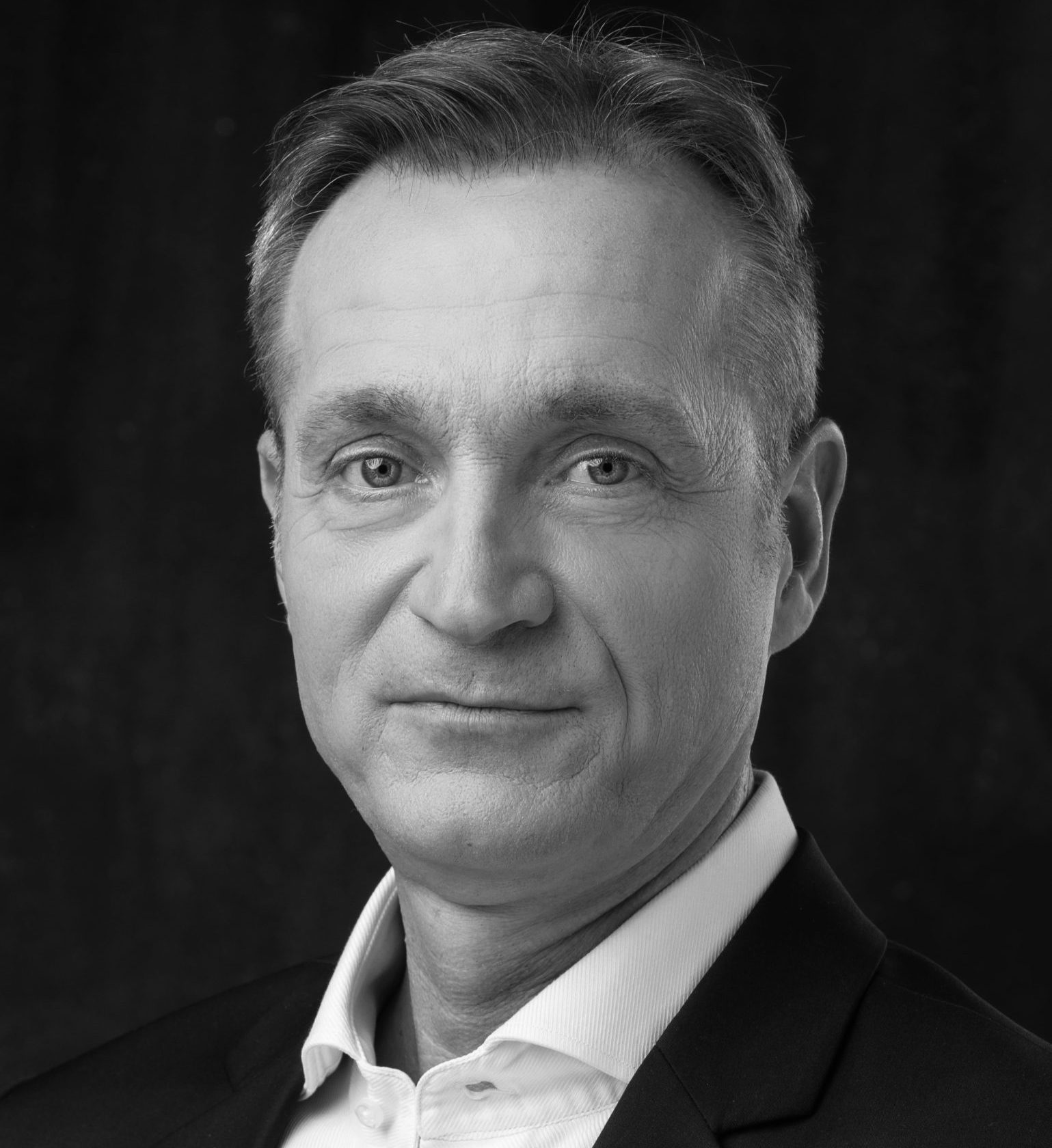




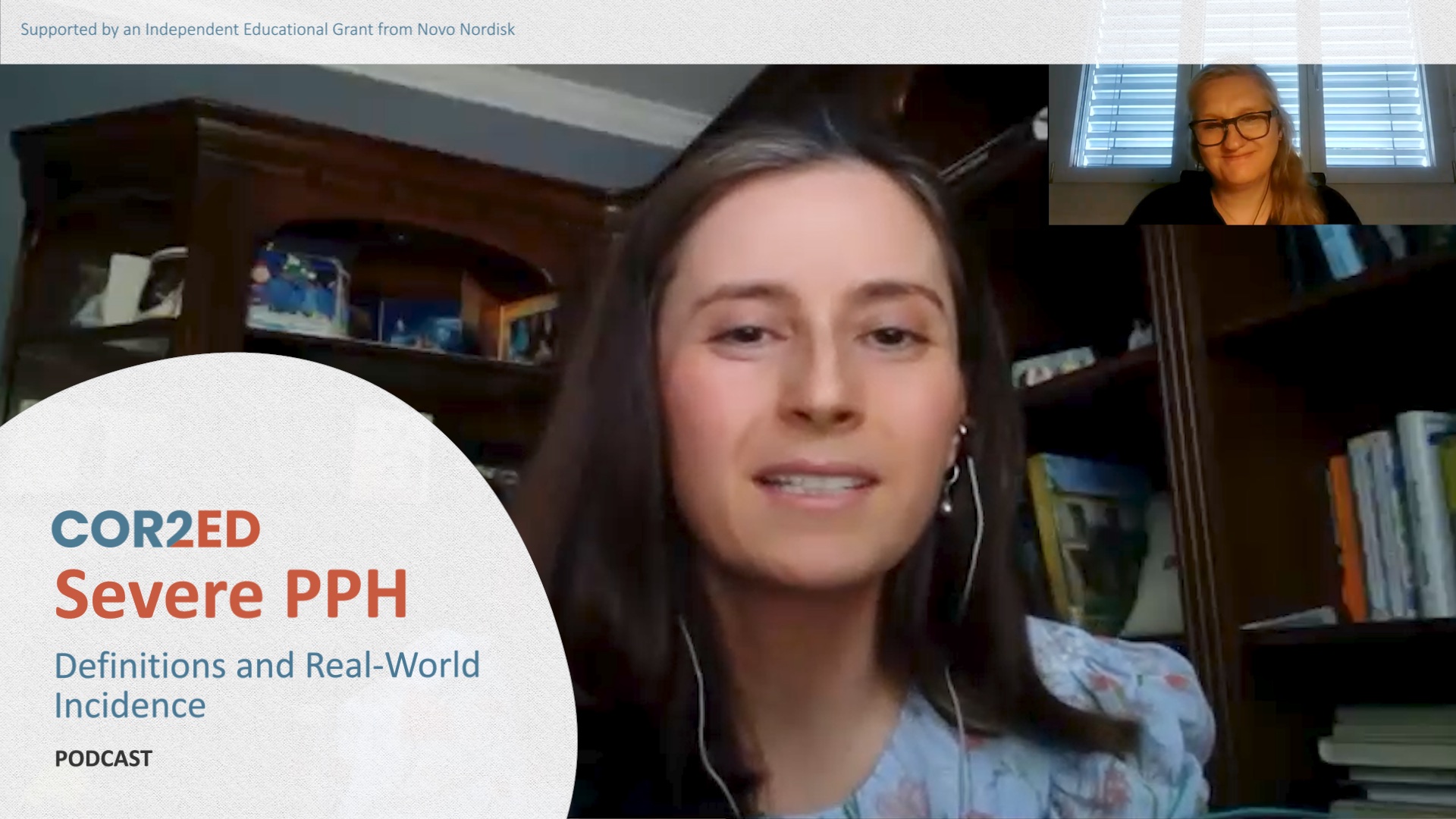
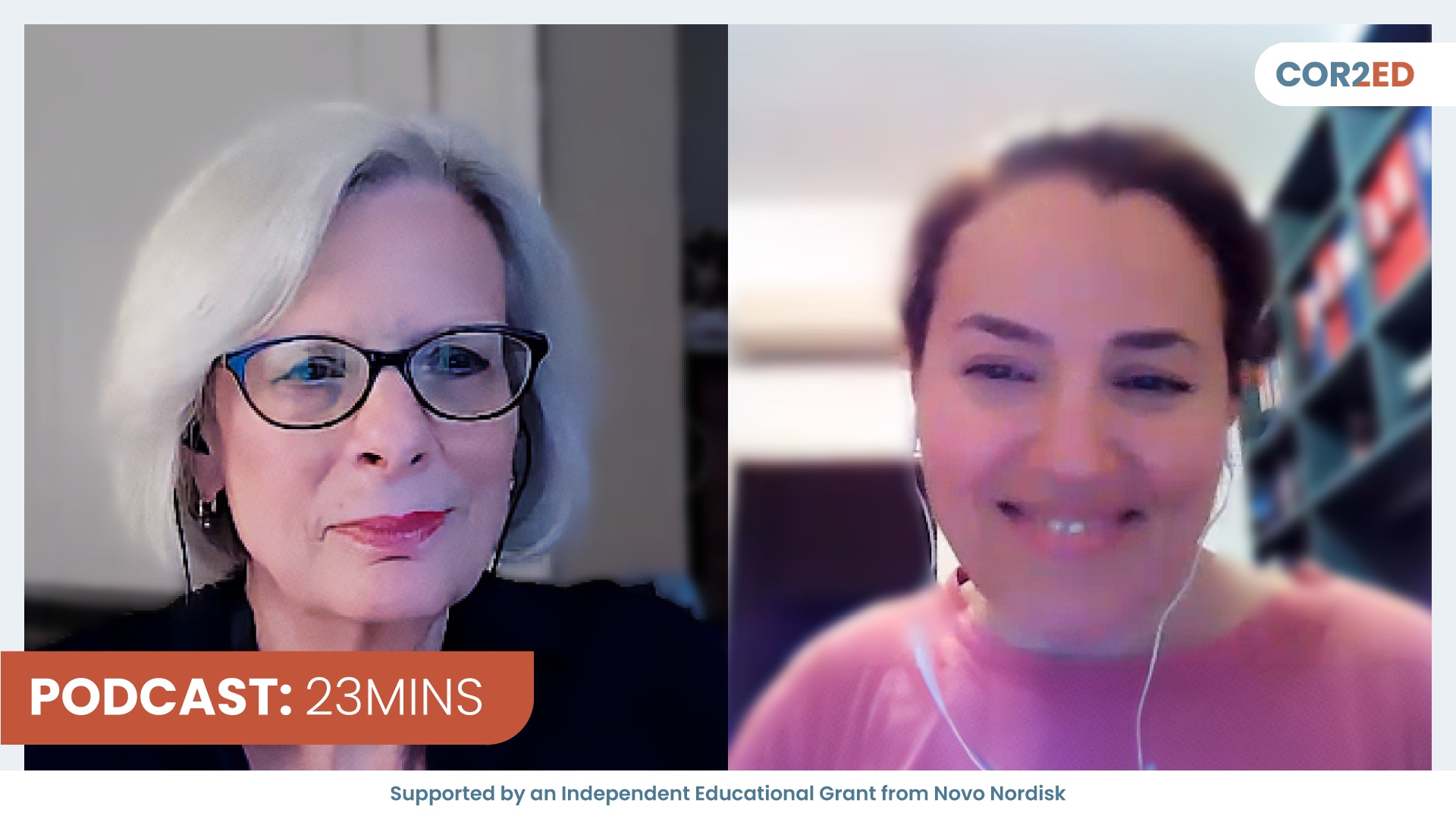
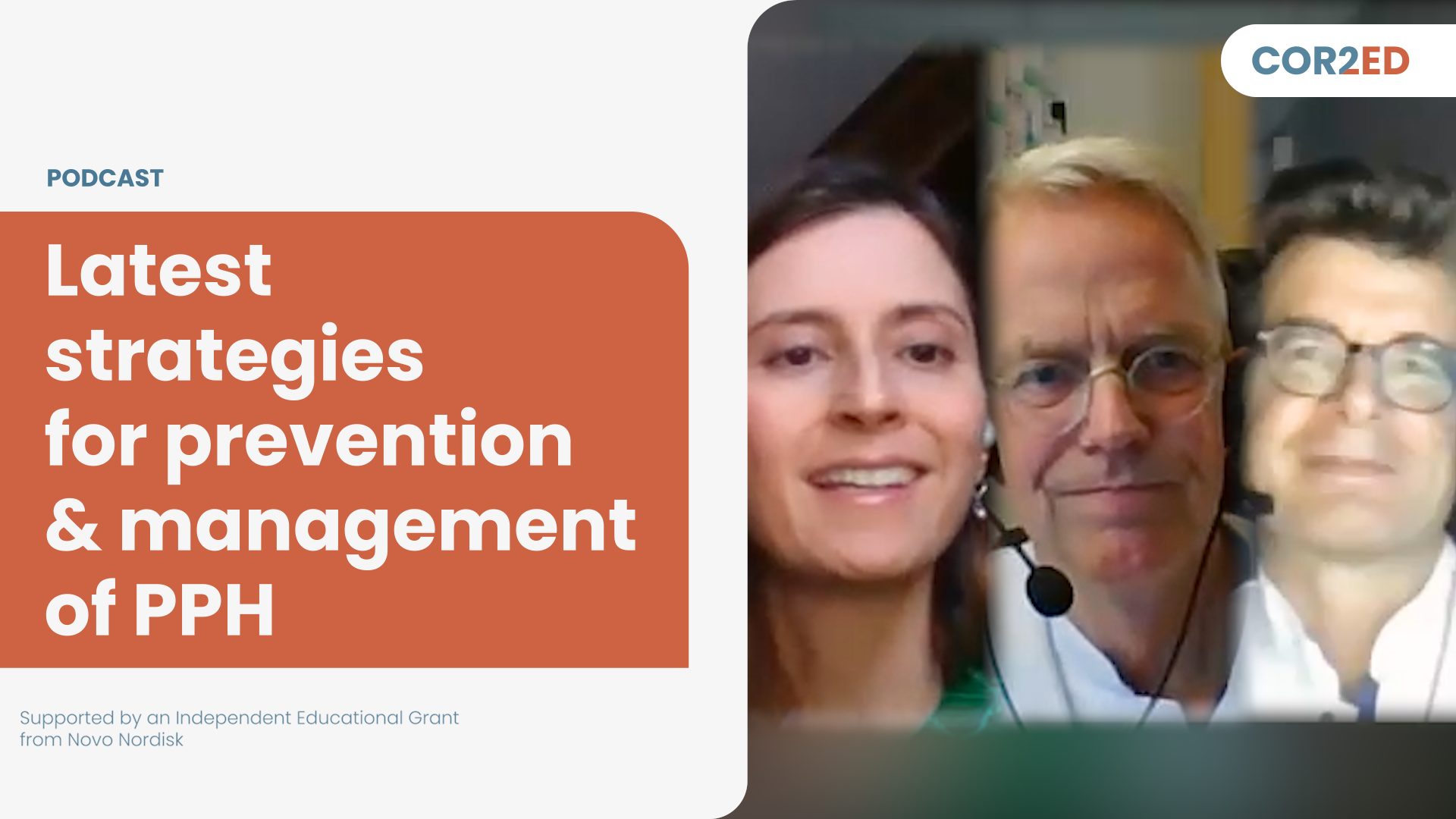




 Downloadable
Downloadable  34 MIN
34 MIN
 Jan 2024
Jan 2024 